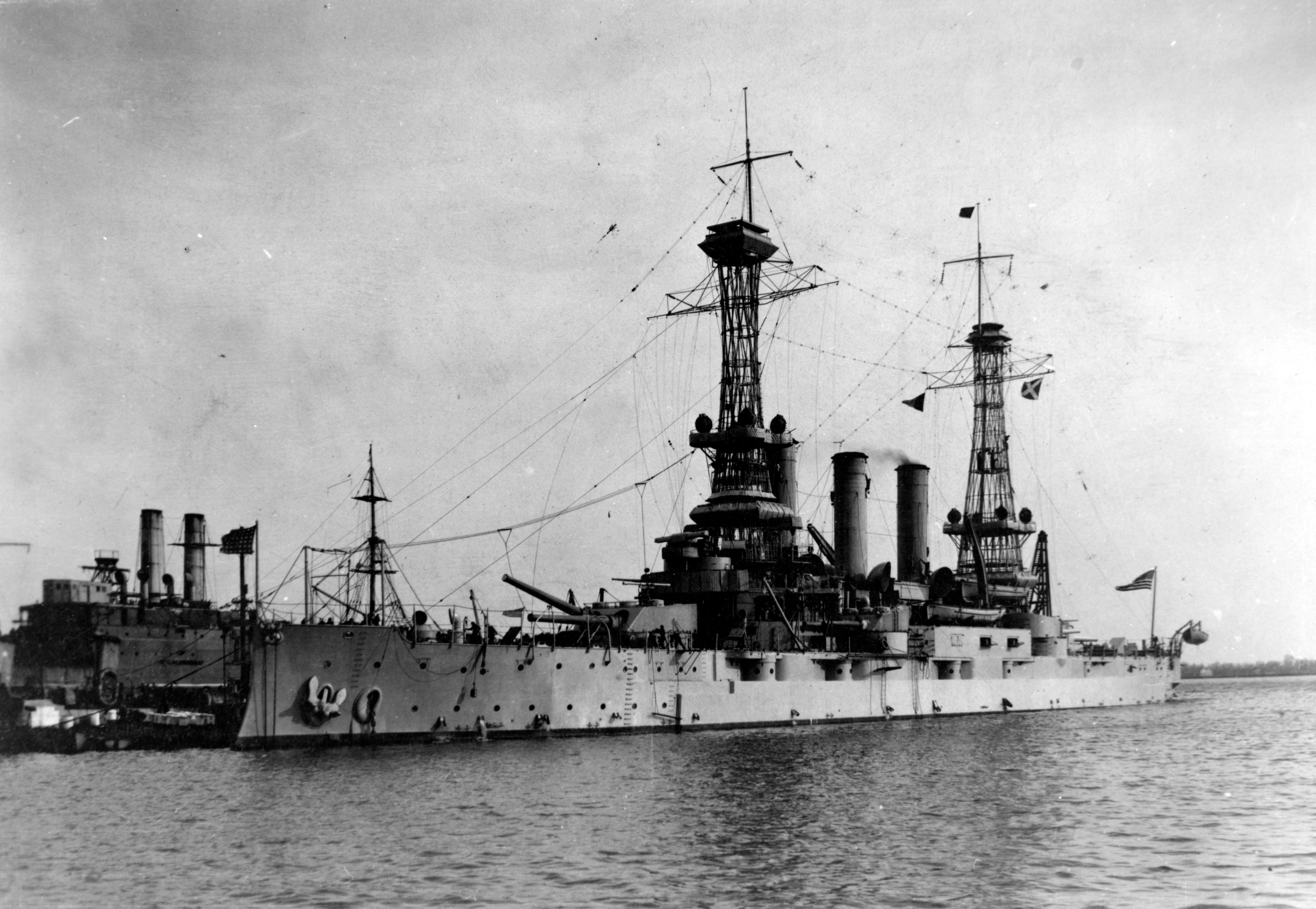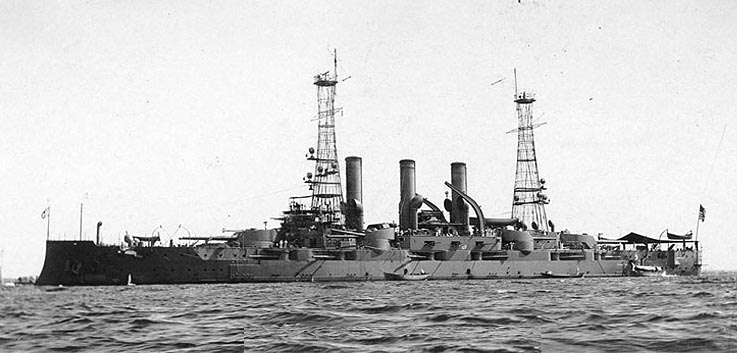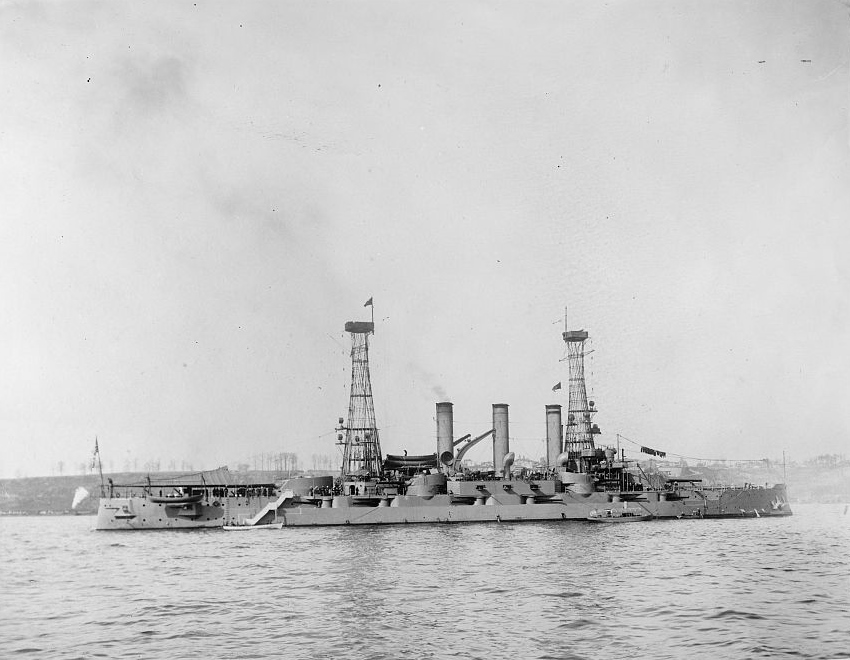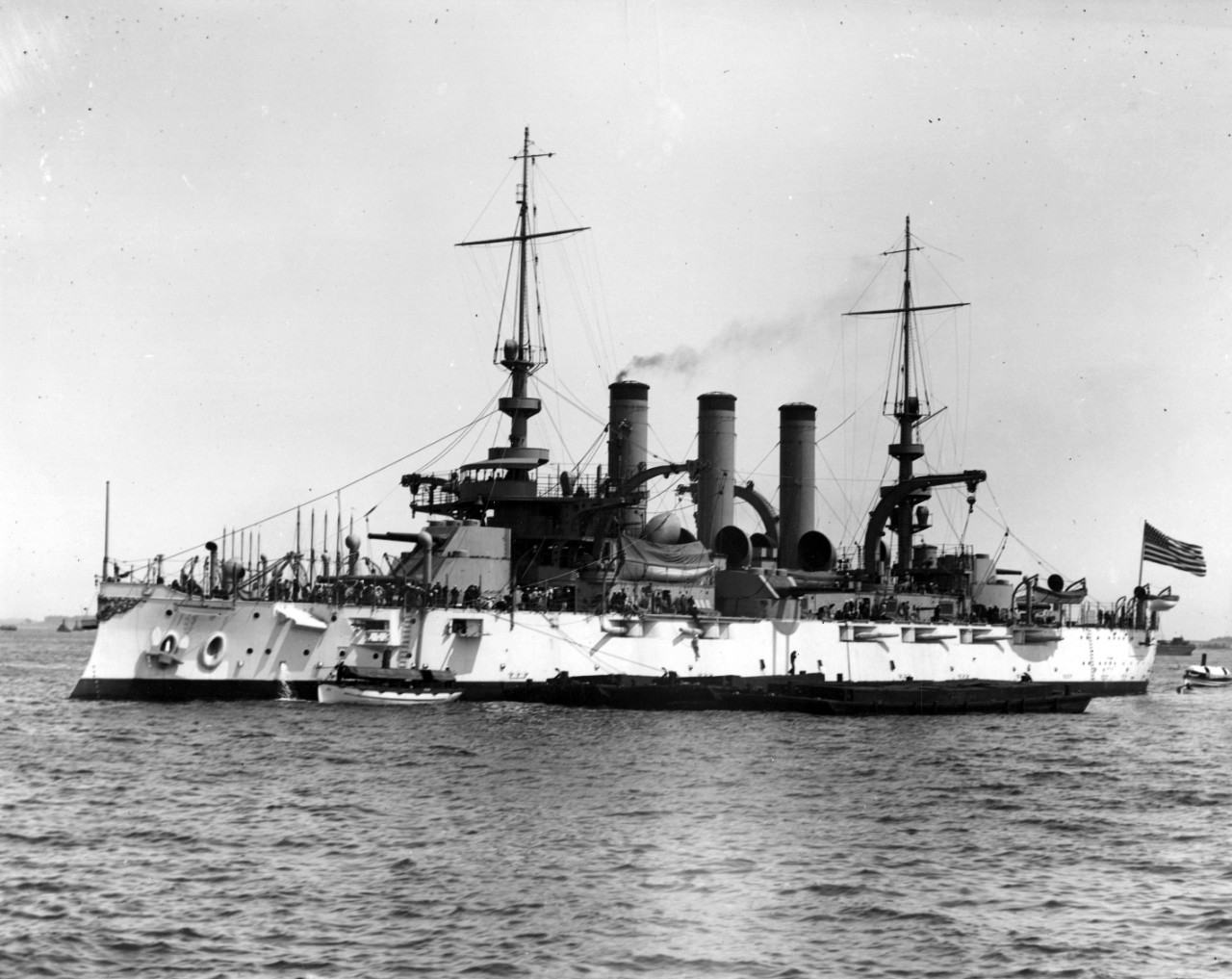|
Timeline Of Battleships Of The United States Navy
This is a bar graph showing a Timeline of battleships of the United States Navy. The ships are listed in order of hull number. Notes In general, labels for ships of a single class are aligned vertically with the topmost ship in a column carrying the class name. In an attempt to show the full timeline of the actual existence of each ship, the final dates on each bar may variously be the date struck, sold, scrapped, scuttled, sunk as a reef, etc., as appropriate to show last time it existed as a floating object. *The ''South Dakota''-class was cancelled during construction and never commissioned and the assigned hull numbers 49-54 are not shown. *The USS ''Washington'' (BB-47) had been launched and was over 75% completed when she was canceled under the terms of the Washington Naval Treaty in 1922. The name ''Washington'' was re-used on BB-56. *The last two ships of the ''Iowa''-class were also cancelled during construction and the assigned hull numbers 65 and 66 are not show ... [...More Info...] [...Related Items...] OR: [Wikipedia] [Google] [Baidu] |
Bar Chart
A bar chart or bar graph is a chart or graph that presents categorical data with rectangular bars with heights or lengths proportional to the values that they represent. The bars can be plotted vertically or horizontally. A vertical bar chart is sometimes called a column chart. A bar graph shows comparisons among discrete categories. One axis of the chart shows the specific categories being compared, and the other axis represents a measured value. Some bar graphs present bars clustered in groups of more than one, showing the values of more than one measured variable. History Many sources consider William Playfair (1759-1824) to have invented the bar chart and the ''Exports and Imports of Scotland to and from different parts for one Year from Christmas 1780 to Christmas 1781'' graph from his ''The Commercial and Political Atlas'' to be the first bar chart in history. Diagrams of the velocity of a constantly accelerating object against time published in ''The Latitude of Forms'' ... [...More Info...] [...Related Items...] OR: [Wikipedia] [Google] [Baidu] |
USS Missouri (BB-11)
USS ''Missouri'' (BB-11), a , was the second ship of her class and of the United States Navy to be named in honor of the 24th state. ''Missouri'' was laid down in February 1900 at the Newport News Shipbuilding & Drydock Company, was launched in December 1901, and was commissioned into the fleet in December 1903. She was armed with a main battery of four guns and could steam at a top speed of . ''Missouri'' spent her entire career in the Atlantic with the North Atlantic Fleet, later renamed the Atlantic Fleet. In late 1907, she and the rest of the Atlantic Fleet circumnavigated the globe as the so-called Great White Fleet, which ended in February 1909. The ship was decommissioned in 1910, with periodic reactivations for summer training cruises over the followed six years. After America entered World War I in April 1917, ''Missouri'' was brought back into service to train personnel for the expanding wartime Navy. She served briefly as a troopship in 1919, carrying American s ... [...More Info...] [...Related Items...] OR: [Wikipedia] [Google] [Baidu] |
Greek Battleship Kilkis
USS ''Mississippi'' (BB-23) was the lead ship of the originally built by the US Navy in 1904–1908. The class was built to a design smaller than other American battleships as the result of a limit on displacement (ship), displacement imposed by United States Congress, Congress as part of an effort to constrain costs. The ships were armed with a main battery of four , the standard for pre-dreadnought battleships of the time, but to secure that heavy primary armament, significant compromises in speed, battleship secondary armament, secondary batteries, and armor protection were necessary to keep the ship within the prescribed displacement limit. ''Mississippi'' served with the United States Fleet Forces Command, Atlantic Fleet from 1909 to 1912, which consisted primarily of routine training operations. In 1910, she and other ships of the fleet visited Europe and in 1912, she carried marines to Cuba during civil unrest in the country. Too slow to operate effectively with the fleet ... [...More Info...] [...Related Items...] OR: [Wikipedia] [Google] [Baidu] |
USS Mississippi (BB-23)
USS ''Mississippi'' (BB-23) was the lead ship of the originally built by the US Navy in 1904–1908. The class was built to a design smaller than other American battleships as the result of a limit on displacement imposed by Congress as part of an effort to constrain costs. The ships were armed with a main battery of four , the standard for pre-dreadnought battleships of the time, but to secure that heavy primary armament, significant compromises in speed, secondary batteries, and armor protection were necessary to keep the ship within the prescribed displacement limit. ''Mississippi'' served with the Atlantic Fleet from 1909 to 1912, which consisted primarily of routine training operations. In 1910, she and other ships of the fleet visited Europe and in 1912, she carried marines to Cuba during civil unrest in the country. Too slow to operate effectively with the fleet, she was placed in reserve in 1912. ''Mississippi'' was reactivated in January 1914 for use as an aviation su ... [...More Info...] [...Related Items...] OR: [Wikipedia] [Google] [Baidu] |
USS Minnesota (BB-22)
USS ''Minnesota'' (BB-22), the fifth of six pre-dreadnought battleships, was the first ship of the United States Navy in honor of the 32nd state. She was laid down at the Newport News Shipbuilding Company of Newport News, Virginia in October 1903, launched in April 1905, and commissioned into the US fleet in March 1907, just four months after the revolutionary British battleship entered service. ''Minnesota'' was armed with a main battery of four guns and a secondary battery of twenty 7 and 8 in (178 and 203 mm) guns, unlike ''Dreadnought'', which carried an all-big-gun armament that rendered ships like ''Minnesota'' obsolescent. Shortly after she entered service, ''Minnesota'' joined the Great White Fleet for its circumnavigation of the globe in 1908–1909. The years from 1909 to 1912 were uneventful, but thereafter the ship began to become involved in conflicts in the Caribbean. She supported efforts to put down an insurrection in Cuba in 1912 and patroll ... [...More Info...] [...Related Items...] OR: [Wikipedia] [Google] [Baidu] |
USS Kansas (BB-21)
USS ''Kansas'' (BB-21) was a US pre-dreadnought battleship, the fourth of six ships in the class. She was the second ship of the United States Navy named Kansas, but the only one named in honor of the state of Kansas. The ship was launched in August 1905 and commissioned into the fleet in April 1907. ''Kansas'' was armed with a main battery of four guns and was capable of a top speed of . Shortly after she entered service, ''Kansas'' joined the Great White Fleet for its circumnavigation of the globe in 1908–1909. She made trips to Europe in 1910 and 1911 and after 1912, became involved in suppressing unrest in several Central American countries, including the United States occupation of Veracruz during the Mexican Revolution. After the United States entered World War I in April 1917, ''Kansas'' was employed as a training ship for new personnel. In September 1918, she began escorting convoys to Europe. After the war ended in November, she then began a series of trips to F ... [...More Info...] [...Related Items...] OR: [Wikipedia] [Google] [Baidu] |
USS Vermont (BB-20)
USS ''Vermont'' (BB-20), a , was the second ship of the United States Navy named after the 14th state. She was the third member of the class, which included five other ships. The ''Connecticut''-class ships were armed with a main battery of four guns and had a top speed of . ''Vermont'' was laid down in May 1904 at the Fore River shipyard and launched in August 1905. The ship entered service with the Atlantic Fleet in March 1907. Shortly after she entered service, ''Vermont'' joined the Great White Fleet for its circumnavigation of the globe in 1908–1909. She took part in the international Hudson–Fulton Celebration in New York in 1909 and made trips to Europe in 1910 and 1913. Thereafter, the ship became involved in interventions in several Central American countries, including the United States occupation of Veracruz during the Mexican Revolution, where two of her crew earned the Medal of Honor. During the United States' participation in World War I from April 1917 to ... [...More Info...] [...Related Items...] OR: [Wikipedia] [Google] [Baidu] |
USS Louisiana (BB-19)
USS ''Louisiana'' (BB-19) was a of the United States Navy. She was the second member of the class of six pre-dreadnought battleships, and the third ship to carry her name. ''Louisiana'' was laid down in February 1903, launched in August 1904, and commissioned in June 1906. She was a battleship capable of . Her main battery, main armament consisted of four guns supported by a mixed secondary battery of and guns. ''Louisiana'' primarily operated along the east coast of the United States and in the Caribbean Sea, Caribbean during her career. In 1908–1909, she took part in the world cruise of the Great White Fleet. A pair of trips to European waters took place in 1910 and 1911. From 1913, she began to become involved in the Mexican Revolution, as the US Navy began to send ships to protect American interests in the country. This activity culminated in the United States occupation of Veracruz, US occupation of Veracruz in April 1914. During World War I, ''Louisiana'' was empl ... [...More Info...] [...Related Items...] OR: [Wikipedia] [Google] [Baidu] |
USS Connecticut (BB-18))
USS ''Connecticut'' may refer to the following ships that were operated by the United States: * was a gundalow that served with the Continental Army during the American Revolutionary War * served during the Quasi-War * was a sidewheel steamer launched in 1861 and in service during the American Civil War * USS ''Pompanoosuc'', a screw steamer whose building began in 1863, was renamed ''Connecticut'' on 15 May 1869, but never launched; broken up in 1884 * was a monitor renamed during construction and commissioned as USS ''Nevada'' * was a , flagship of the Great White Fleet and saw action during World War I * is the second currently in service {{DEFAULTSORT:Connecticut United States Navy ship names ... [...More Info...] [...Related Items...] OR: [Wikipedia] [Google] [Baidu] |
USS Rhode Island (BB-17)
USS ''Rhode Island'' (BB-17) was the last of five s built for the United States Navy, and was the second ship to carry her name. She was laid down in May 1902, launched in May 1904, and commissioned into the Atlantic Fleet in February 1906. The ship was armed with an offensive battery of four guns and eight guns, and she was capable of a top speed of . The ship's career primarily consisted of training with the other battleships of the Atlantic Fleet. ''Rhode Island'' took part in the cruise of the Great White Fleet in 1907–1909, and thereafter largely remained in the Atlantic. In late 1913, she cruised the Caribbean coast of Mexico to protect American interests during the Mexican Revolution. After the United States entered World War I in April 1917, ''Rhode Island'' was assigned to anti-submarine patrols off the east coast of the US. Starting in December 1918, after the end of the war, the ship was used to repatriate American soldiers. She carried over 5,000 men in the co ... [...More Info...] [...Related Items...] OR: [Wikipedia] [Google] [Baidu] |
USS New Jersey (BB-16)
USS ''New Jersey'' (BB-16) was the fourth of five s of the United States Navy, and the first ship to carry her name. She was laid down at the Fore River Shipbuilding Company in Quincy, Massachusetts, in May 1902, launched in November 1904, and commissioned into the fleet in May 1906. The ship was armed with an offensive battery of four guns and eight guns, and she was capable of a top speed of . ''New Jersey'' spent her entire career in the Atlantic Fleet. In late 1906, she took part in the Second Occupation of Cuba, and she participated in the Jamestown Exposition in April – May 1907. At the end of the year, she joined the Great White Fleet for its circumnavigation of the globe, which lasted into 1909. The ship spent the following five years conducting peacetime training. In April 1914, ''New Jersey'' took part in the occupation of Veracruz during the Mexican Revolution. During World War I, she was used as a training ship, and after the war, she was tasked with ... [...More Info...] [...Related Items...] OR: [Wikipedia] [Google] [Baidu] |
USS Georgia (BB-15)
USS ''Georgia'' (BB-15) was a United States Navy , the third of five ships of the class. She was built by the Bath Iron Works in Maine, with her keel laid in August 1901 and her launching in October 1904. The completed battleship was commissioned into the fleet in September 1906. The ship was armed with an offensive battery of four guns and eight guns, and she was capable of a top speed of . ''Georgia'' spent the majority of her career in the Atlantic Fleet. In 1907, she took part in the Jamestown Exposition and suffered an explosion in her aft 8-inch gun turret that killed or wounded 21 men. At the end of the year, she joined the Great White Fleet on its circumnavigation of the globe, which ended in early 1909. Peacetime training followed for the next five years, and in 1914 she cruised in Mexican waters to protect American interests during the Mexican Revolution. In early 1916, the ship was temporarily decommissioned. When the United States entered World War I in ... [...More Info...] [...Related Items...] OR: [Wikipedia] [Google] [Baidu] |




_on_trials.jpg)



